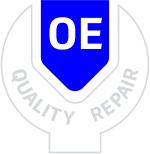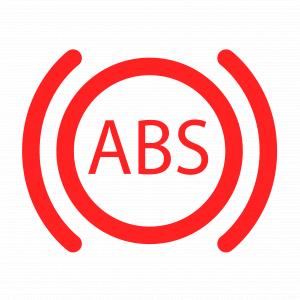Heavy duty & off-highway Diesel Fuel Injection

- Product Information
- Product Resources
- Enquire
- Related Products
Rich OE legacy
Our heritage dates back to the legendary CAV brand, and the introduction of in-line and the iconic DPA pump – the best-selling rotary pump worldwide. Both were revolutionary for their time, setting new standards for reliability and power, and we’ve continued to push the boundaries ever since.
Three choices for fleets
By providing three choices – new, reman and repair – we can provide fleet managers with convenient service and maintenance at a very competitive cost.
Latest generation OE technology
Our latest generation F3 system takes engines beyond the 2021 global emissions and fuel economy regulations and through the next decade. Based on our proven Euro VI Common Rail technology and capable of 3,000 bar injection pressure, it delivers a substantial improvement in emissions, fuel economy and refinement for the lifetime of the engine.
OE-approved repair
In addition to new and remanufactured units, we also offer authorised repair through our global network of Delphi Diesel Centres. Replacing all wearable and performance critical parts, with like-for-like OE, and using OE-approved test plans and equipment, it offers a quality but economical solution.
Find your local diesel specialist here.
Reman
For an equally fast, yet more cost-effective turnaround we offer a range of remanufactured parts. Available off-the-shelf, typically within one to two years of vehicle launch, they are built using OE parts, equipment and processes, and are calibrated to exacting OE specifications.


OE expertise in the aftermarket
Of course, we’re committed to supporting these technologies in the aftermarket. We offer a range of new OE components, identical to those originally fitted, including our pioneering Electronic Unit Injector, Electronic Unit Pump, Smart injector and Multec® Common Rail.
Commercial vehicle diagnostics and test
Our dedicated diagnostic solution for trucks, buses and trailers, supports the key commercial vehicle manufacturers and systems, including the ability to carry out dosing tests, Adblue freeze monitoring calibration, system drain down and regeneration of the SCR system. We also offer a range of OE-approved test equipment for quick and accurate test and repair of the latest heavy duty applications.
Training from the OE experts
Designed to help you prepare for the very latest heavy duty diesel fuel injection technologies, our extensive training programme covers the repair of key systems, including Electronic Unit Injector and Pump and Smart injectors. Learn more about our training.
.jpg?sfvrsn=950636e0_7)
The Delphi Difference
-
100 years of OE experience, supplier to the world’s top automakers
-
OE heritage and knowledge built into every aftermarket part
-
Comprehensive portfolio for a wide range of vehicles and model years
-
Streamlined SKUs for easy inventory management
-
Support through tools, tips and training

Related product resources and downloads
Resource Highlights
Here, we provide a quick overview of the most important vehicle warning lights and explain why you should never ignore them.
With the increasing electronic content in modern vehicles comes a multitude of new dashboard warning lights. And since cars can now effectively self-diagnose, these lights will communicate important error messages and faults, alongside less critical information. Worryingly, however, a recent survey suggested that nearly half of all motorists don’t understand what they mean. Do you? Here, we provide a quick overview of the most important lights and explain why you should never ignore them.
Some warning lights aren’t cause for concern; they’ll simply go out once the car’s running. Others are a sign, usually the first sign, that something’s not right. This could be a minor problem, such as a faulty sensor or loose wire, or something a whole lot more serious – a red warning light - which will require immediate attention. Either way, if illuminated whilst driving and left unchecked, they could be unsafe or cause long-lasting and costly damage, so you’ll want to get it checked.
Brake system warning light:
As well as a reminder that you’ve left your handbrake on, this could indicate a fault with the brake system, such as wear to your brake pads or discs, low brake fluid level or an issue with the anti-lock brakes. Since your brakes are safety critical, you’ll want to get this checked out by a qualified technician immediately.
.jpg?sfvrsn=710943a_1)
Engine warning light:
As a rule of thumb, the check engine or ECU light only comes on if there’s an emissions related fault. If this light illuminates, the car will still function, but could switch into what’s known as ‘limp home’ or ‘safe’ mode with reduced performance, to protect itself. Either way, it will require immediate attention, to prevent any longer term and potentially irreparable damage

Power steering/EPS warning light:
This indicates an issue with your power steering, causing your steering to become heavy. This can be annoying at lower speeds, but could have much more serious consequences at higher speeds, especially if you need to manoeuvre quickly. It’s therefore important to have it checked out straight away by a professional.

Diesel particulate filter (DPF) warning light:
Most modern diesel vehicles are fitted with a DPF, which removes harmful soot from the exhaust. Much like a hoover, this can become blocked and will need to be emptied. If this happens it will trigger a warning light, which for the most part is nothing to worry about – driving for 10 minutes or so at speeds over 40mph will normally clear it. However, you should never ignore this light as a completely blocked DPF can be expensive to replace and cause damage to the engine.
-warning-light.png.jpg?sfvrsn=d10f94b3_1)
Airbag warning light:
Whilst this can indicate that the airbag has been switched off manually, it can also signal a fault. A defective airbag may not deploy in a crash. Alternatively, it could go off for no reason. Both risk injury and can be expensive to resolve, so it pays to get it sorted.

Coolant warning light:
This can signal that your coolant levels are running low and will need topping up, or that your engine is overheating. This could be the sign of a system leak, or a larger problem such as a gasket head failure. Either way, it’s advisable to get it seen to as soon as possible to avoid any further damage.

Oil warning light:
This can suggest one of three things; the temperature of the oil is too high or the level or pressure is too low. Unfortunately, if this light comes on, it might already be too late, since the engine may have been starved of oil, and thus lubrication, damaging the internal components and resulting in a potentially expensive bill. So if you see this light, pull over safely and seek immediate attention.

Tyre pressure moniotor warning light:
If your car is equipped with a monitoring system, sensors in the wheel will detect any loss of tyre pressure and trigger a warning light on your dashboard. This could indicate a gradual reduction in pressure or a puncture. Just remember, if you’re topping up the tyre with air, you’ll need to reset the system.

ABS warning light:
This can indicate a number of issues, ranging from a faulty sensor to a defective ABS pump. If you have a wear sensor installed, it may also signal that you need to replace your brake pads. If the ABS warning light is illuminated, chances are your brakes are not functioning correctly so you’ll want to get it inspected immediately.

Battery warning light:
This light should switch off a few seconds after you start your engine. If it doesn’t you could have a problem with your electrical system such as a faulty battery or alternator. Critically if the alternator isn’t charging the battery, you could run out of electrical power and come to a halt. Start by turning off anything that draws power from the battery such as the radio, A/C etc and then seek professional help. In the interim, it’s advisable not to switch off the engine, until you’ve reached a safe place, in case it doesn’t start again.

Get in touch

Find out where to buy Delphi parts

